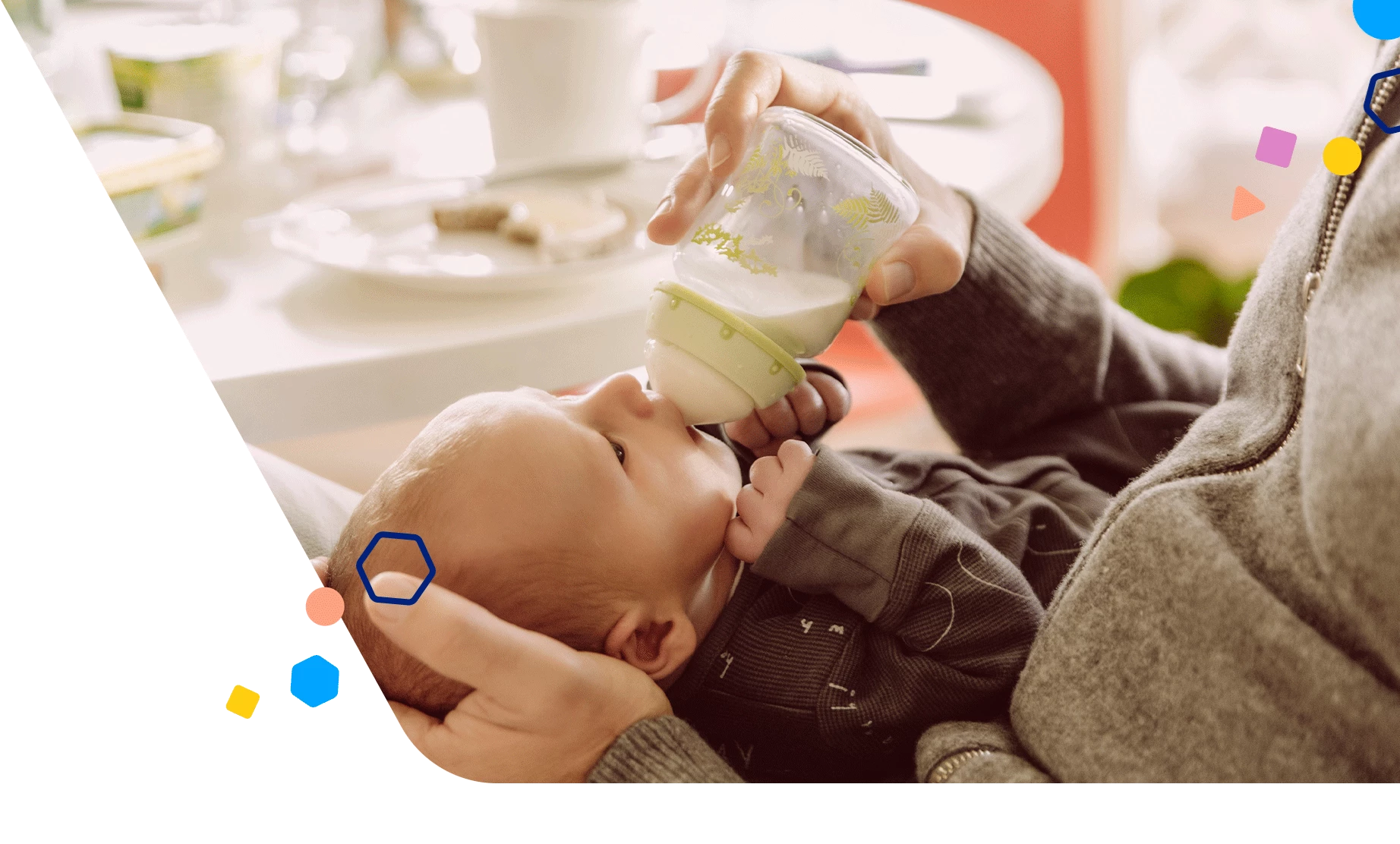KEY TAKEAWAYS
- Simply put, hydrolyzed formulas contain milk protein that has already been broken down into smaller pieces, making it easier for babies to digest
- Partially hydrolyzed formula is designed to ease common behaviors of digestive discomfort such as fussiness, gas and crying with easy-to-digest proteins
- Extensively hydrolyzed formula is effective in managing cow's milk protein allergy for most babies
The wonders of hydrolyzed formulas—and how they could help your baby.
Babies with a cow’s milk allergy may require an extensively hydrolyzed formula. These formulas have cow's milk proteins that have been extensively broken down, so they are unlikely to cause an allergic response.
Within the world of hydrolyzed formulas, you may have noticed one or more of the following terms: partially hydrolyzed, extensively hydrolyzed, predigested, partially broken down or extensively broken down. While these descriptors sound quite different, they all describe types of formulas where the protein has been broken down to smaller parts.
These tailored formulas aren't actually predigested, but hydrolyzed formulas are often referred to as being predigested because the milk protein has already been broken down into smaller pieces called peptides.
What makes hydrolyzed formulas different.
Start by thinking of the milk protein in formula as the size of an entire string of pearls. Now picture breaking that string of pearls in five spots, giving you several smaller strands of pearls. At that point, you'd have the partially hydrolyzed protein found in partially hydrolyzed formulas, which are easy for many babies to digest. If those smaller strands were broken down yet again, you'd be left with the much smaller milk protein pieces found in an extensively hydrolyzed formula, which is
It's kind of amazing, but when the protein gets broken down into pieces that small in an extensively hydrolyzed formula, the baby's system no longer recognizes the cow’s milk protein, and most times there's no allergic response.
Which hydrolyzed formula might be right for my baby?
A partially hydrolyzed formula:
- Designed to ease common behaviors of digestive discomfort such as fussiness, gas and crying
- Has easy-to-digest proteins that are partially broken down
- Provides complete nutrition.
While many babies on partially hydrolyzed formulas are following the suggestion of their pediatricians, moms who have used such formulas successfully for one child and simply start their new baby on a partially hydrolyzed formula may see continued success. Enfamil NeuroPro™ Gentlease® is designed to reduce fussiness, gas and crying within 24 hours and offers the complete nutrition your baby needs to reach key milestones. If your baby has fussy feedings, ask the pediatrician if Gentlease might be a good choice.
An extensively hydrolyzed formula is:
- Effective in managing cow's milk protein allergy for most babies
- Made with very small protein parts that minimize the chances of the baby having an allergic response
- Nutritionally complete
When an extensively hydrolyzed formula successfully manages a cow's milk allergy, babies generally remain on this type of formula, which still provides the complete nutrition they need to reach developmental milestones. Cow’s milk allergy is often outgrown by the time children reach school age and most go on to be able to consume dairy products with regular milk proteins without issue.
An extensively hydrolyzed formula like Nutramigen® can quickly manage colic due to cow's milk allergy—often within 48 hours. The protein in this tailored formula has been helping babies feel better for over 70 years and has numerous clinical trials behind it. Recent innovations such as Nutramigen® with Enflora™ LGG®* can help babies acquire tolerance and return to consuming regular milk in as fast as 6 months of feeding.
If you think your baby may have cow's milk protein allergy it's important to talk to your baby's doctor right away.
*LGG is a registered trademark of Chr. Hansen A/S.

